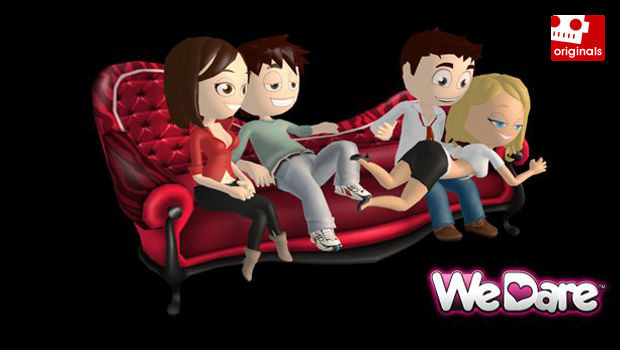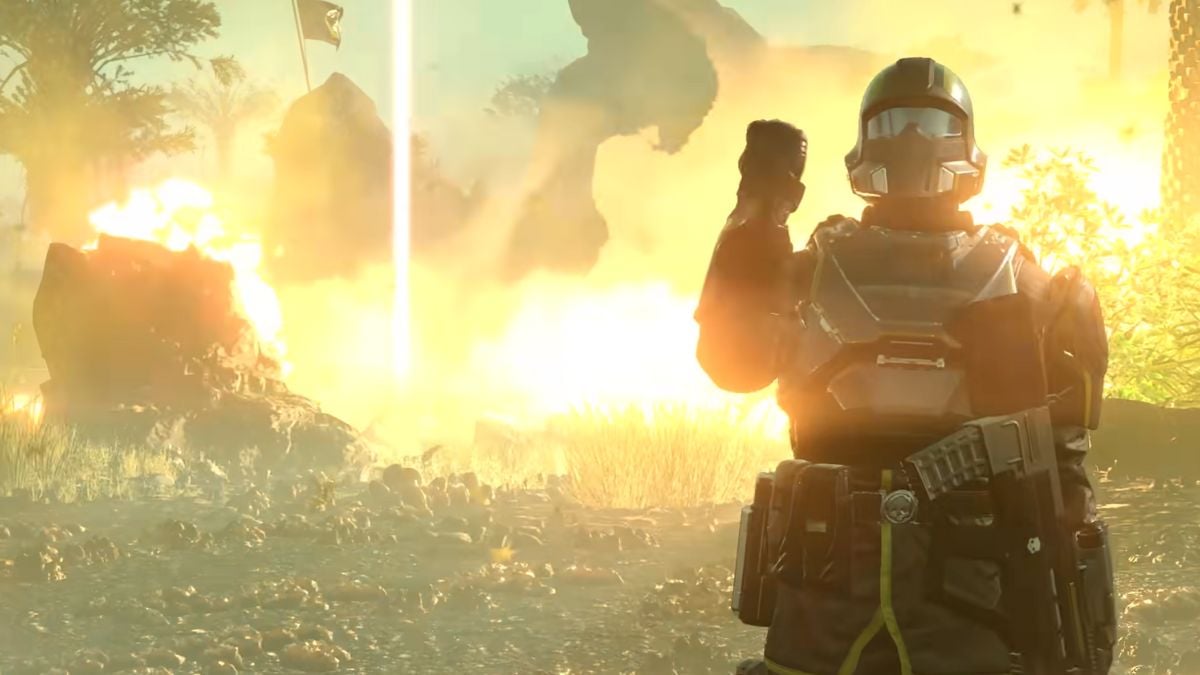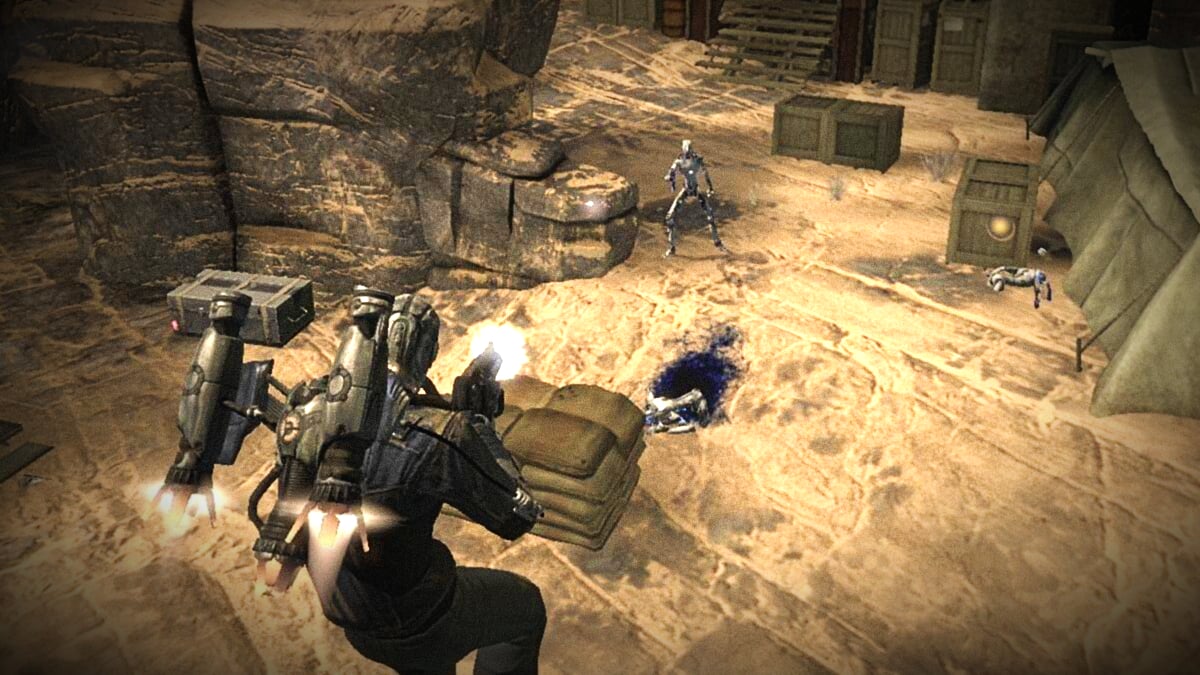[Talking to Women about Videogames is a series where Jonathan Holmes talks to different people who are women about the biggest videogame news of the week for some reason.]
Grand Theft Auto III was originally released in 2001, starting the reign as one of the most popular videogame series today. Fast forward to today, and we have millions of 20-25 year olds who have grown up playing the games, yet we are not in the midst of a social apocalypse. We have a generation of children brought up on a game where the name itself is a crime, a game where hiring then murdering prostitutes is made to be “fun,” yet the world is still standing. Actually, these GTA fans seem like pretty well-adjusted people overall, as evidenced by the steady drop in the crime rate throughout the country since 1995.
There are also millions of “underage” kids today that absolutely love the Call of Duty series, despite its M rating. In fact, going by the reaction to the last TtWaV teaser, there are quite a few people out there under the age of 18 who would be more interested in playing the next Zelda game if it was rated M.
These are just a few of the reasons why I think it’s clear that the ESRB has failed.

The ESRB has two jobs: to determine what games are appropriate for what age groups and to deter people from the “wrong” age groups from playing the “wrong” games. It hasn’t succeeded at any of that. The E, T, M, AO system does not properly divide games into what groups should be playing them, it does not properly describe the content in the games it classifies, and it also encourages players of the “inappropriate” groups to be attracted to the games they aren’t supposed to play (for obvious reasons).
It’s not all the ESRB’s fault, though. Society as a whole has the wrong idea about what is bad for kids to experience. When it comes to children, people’s fear of harming the child or potentially shaping them into a “bad” person often blinds them from common sense. Take people’s fear of swearing, for instance. Hearing people swear won’t hurt kids or make them more inclined to repeat the swears they hear. If that were the case, then every kid on the planet would be swearing constantly, as there is literally no escape from swear words in today’s world. Kids can hear all the swears they want and oftentimes do. What’s important is how the children are taught to understand the meaning of those words, and if and when it’s OK to use them. Same goes for the nudity and violence that they see in movies and videogames. As long as the child is prevented from experiencing something that will disturb or traumatize them, all that’s left is to help them to learn not to repeat the dangerous or harmful things that they’ve seen.

In general, I would say that it’s the minor violent actions that are physically and morally easy for children to repeat that are the most dangerous for children to witness. The fantastic, ultra-violent stuff is almost always presented with serious consequences within the given context of the event. While that stuff may be overstimulating to a kid, or even disturbing, it’s not likely to teach him or her to be “bad,” not in the way that more minor, seemingly “harmless” violence can.
Here’s a story from experience to drive home that point. When I was a kid (probably between five and seven), I got really angry at my mother, but I can’t remember why. It was probably something about Care Bears. Regardless, I was really upset, but not in a tantrum way. This time, I wanted to express my anger in a more “real” way, but I couldn’t think of a way that would show her the depths of my anger while remaining relatively harmless.
Enter Tom and Jerry.

There is one episode of this extremely violent cat and mouse kids’ show where Tom (the cat) pretends to prepare a place at the table for his owner as part of his evil plan. He politely pulls the chair out for her, only to yank it from beneath her right as she’s about to sit down. Since this is a “kids’ show,” Tom’s owner wasn’t seriously hurt. We wouldn’t want to make the kids feel bad, now would we? Instead, his owner just hops right back to her feet and chases Tom around with a room with a broomstick, leading Tom to jump into a vase to hide, transform into a carpet under his master’s feet, or something else whimsical and exciting.
That was perfect. That was exactly what I was going for. From there, I set a plan in motion to repeat the “prank” that I learned from Tom. I made my mom some toast, set her a place at the table, politely pulled the chair out for her, and yanked it away at the last minute. Much to my horror, a fun and lighthearted chase scene between my mother and myself did not follow. Instead, my Mom and I were both in tears. She was crying in emotional and physical pain, while I was crying in guilt, shame, and empathetic sadness from my betrayed parent. If she had come down any harder, she could have ended up in the hospital. I think we both remember that as one of the all-time low points in our relationship.

Now, keep in mind that by this age, I’d seen plenty of action, horror, and sexy movies. I’d watched Stripes, Invasion of the Body Snatchers, Porky’s, and endless reels of gangster movies and episodes of the Twilight Zone. I’d also played all of the most violent videogames on the market (except Chiller). None of them did the same damage to me that Tom and Jerry did, because in Tom and Jerry, there were no serious consequences for the characters’ actions. In other media, I saw that sex and violence were possible but emotionally trying experiences that were definitely a bad idea for a kid like me to try to repeat. That wasn’t the case with Tom and Jerry. There was absolutely nothing in the show there to teach me that I should not repeat the behaviors I witnessed.
In my personal experience, I’ve heard of the same kinds of things happening with modern videogames. I’ve heard of children jumping on turtles and kicking them down the street, expecting them to innocuously retreat into their shells like they do in the Mario games, only to find them crushed into a bloody pulp under foot. I’ve heard of kids making disgusting food and getting extremely sick to their stomachs because of what they learned from Cooking Mama or even starting fires due to their young culinary ambitions. I have never heard of a kid stealing a car or beating up a prostitute because they saw it in Grand Theft Auto. I have never heard of a child becoming sexually active purely after experiencing the world of romantic failings and foibles through the lenses of Catherine and We Dare.
In fact, when it comes to corrupting our children, I think that videogames are probably the least of our problems. It’s stuff that’s happening in real life that we should probably worry about.

The research that Drs. Cheryl K. Olson and Lawrence Kutner utilized for their book Grand Theft Childhood echoes those sentiments. Their research showed that behaviors that were difficult to replicate or were shown to have negative repercussions were less likely to be repeated by children. Kids played Grand Theft Auto to blow off some steam after feeling bullied at school and actually felt less aggressive afterwards. Games with a lot blood or were generally more disturbing to children, and as a result, children were less likely to want to reenact violent acts they witnessed in bloody games. If Mario had a blood code, we may have had a lot fewer dead turtles in our country.
Of course, that’s still just a generalization. The key thing to take away here is that there is no way to guess how all kids will react to the same content or how kids’ parents will help them to process the content in question. There is no universal truth when it comes to this issue. It’s all dependent on the individuals. All we can do is try to remind people to take responsibility for their actions as parents and as people.

This brings us back the ESRB, which doesn’t seem to have much of a grasp on that concept. Instead, it works to determine what kinds of content is and is not harmful to children regardless of some sort of universal standard, the context, or how the content is implemented. Does it actually think that raising a child is that black and white? What’s even weirder is that most in the industry just pretend that the ESRB matters, all while millions of parents buy Modern Warfare 3 for their 10 year olds, fully aware that the game will be relatively harmless to the hearts and minds of their particular offspring.
Part of that is because things could be a lot worse. If Leland Yee had his way, the world of videogame content ratings would be a police state. It’s better to just let the ESRB pretend that it’s doing a good job than to get rid of it, potentially permitting a much worse power to come into control. Another part of the problem is that we expect too much from the ESRB. It can’t be our co-parent, and we shouldn’t want it to be. The fact that it is so powerful in the eyes of some people speaks more to the desperate hunger parents feel for “expert advice” on child rearing than anything else.

So if the ESRB can’t do much to help us parent our kids, then what is it good for? Well, I guess it could serve the purpose of helping us know what kind of content a game contains, if it really wanted to. I guess the ratings could serve as sort of a mini-review system, but instead of addressing quality, they only address intensity. That might help people to weed out the games the games that might gross them out or give them nightmares, right?
Even that is a little unnecessary, though. For the most part, kids will naturally be disturbed or otherwise repelled by any content that they aren’t ready for. Kids feel pain, emotionally and physically. That’s not something to be sad about. That pain helps them to instinctively avoid things that will hurt them. As I talked about in a past Constructoid, kids won’t play games that are too much for them. If Resident Evil 4 is too intense for them, they’ll go right back to Grand Theft Auto: Vice City. Water tends to find its own level, as does the mind of a child.

Still, for the completely oblivious, I guess it wouldn’t hurt to have a heads-up about the kind of content a game contains before they spend $60 on it. That doesn’t mean that it’s good for those labels to contain the completely arbitrary labels of “Everyone,” “Teen,” “Mature,” and “Adults Only.” I know plenty of kids who only play M-rated games, and plenty of adults who would never bother with anything rated T or above. Age doesn’t really have that much to do with it, especially when it comes to something like videogames where both the graphics and interactivity send a constant message to the player that the events on screen are not a reflection of real-life events.
People (usually) always have control over the events of a videogame. They can change the script to the story with the punch of a button at any time or just put the controller down and end the story right then and there. That helps to remind players that none of it is real and to keep things from getting more intense than they can handle. The exit door is always close by. It seems like society as a whole is still figuring that out.
In the meantime, if the ESRB still insists of rating how disturbing or offensive various videogames are, then I think it should come right out and say it. Don’t tempt kids to play M-rated games by dangling the ever-attractive “mature” label in from of their noses, and don’t imply that certain games have more mass market appeal by saying they are for “everyone.” If you think a game is potentially disturbing to kids or adults, don’t put an age label on it. Just call a spade a spade. Change ratings the ratings from E, T, M, and AO to B (Benign), PO (Potentially Offensive), PD (Potentially Disturbing), and PT (Potentially Traumatizing), in that order. Not only is this less likely to attract kids to the “wrong” kinds of games (assuming that the “wrong” kind of games even exist on some objective level of measure), it’s also just more honest.

If a father isn’t able to determine on his own (after doing some research of course, like every good parent does before buying a game for their child) that a thoroughly silly and joyfully taboo-bending game like Shadows of the Damned may not be a good fit for his easily startled, Hugga Bunch-loving little boy, I don’t see how the the M rating is going to help him to understand it any better. I wonder if “potentially disturbing” might do the job though. Maybe that label will help drive home the fact that a game where you run around on top a giant replica of your naked girlfriend’s body, only to have her disembodied head call you all sorts of swear words later on, might be a little to freaky for his son. Hey, if thats what it takes to help him be a decent parent, who am I to complain?
As someone who’s been playing videogames far longer than the ESRB has existed, it’s easy for me to see how much better it could be, assuming that we need the ESRB to exist at all. That’s just me, though. How about you guys? Has the ESRB ever helped you to avoid a game that was too mature for you to handle, or otherwise aided you and yours in avoiding being emotionally or psychologically damaged by videogames?
Past Episodes:
Talking to Women about Videogames: 3DS 2nd nub panic
Talking to Women about Videogames: Gears 3 isn’t perfect?
Talking to Women about Videogames: Sexy vs. sexist?
Talking to Women about Videogames: What makes you want?
TtWaV teaser: Sony’s online sucks now?
Talking to Women about Videogames: I’m not a real gamer?
Talking to Women about Videogames: Fear for the future
Talking to Women about Videogames: Going mainstream
TtWaV teaser: Battlefield 3 Vs. Modern Warfare 3
Talking to Women about Videogames: You! Like what I like!
TtWaV Teaser: Should Skyward Sword be rated M?




